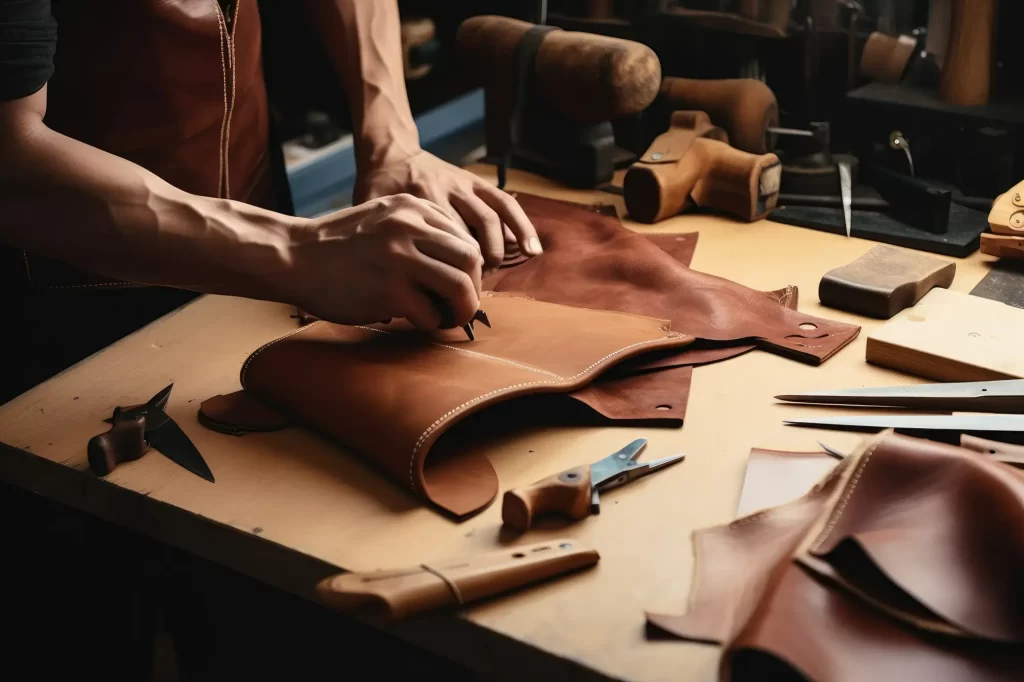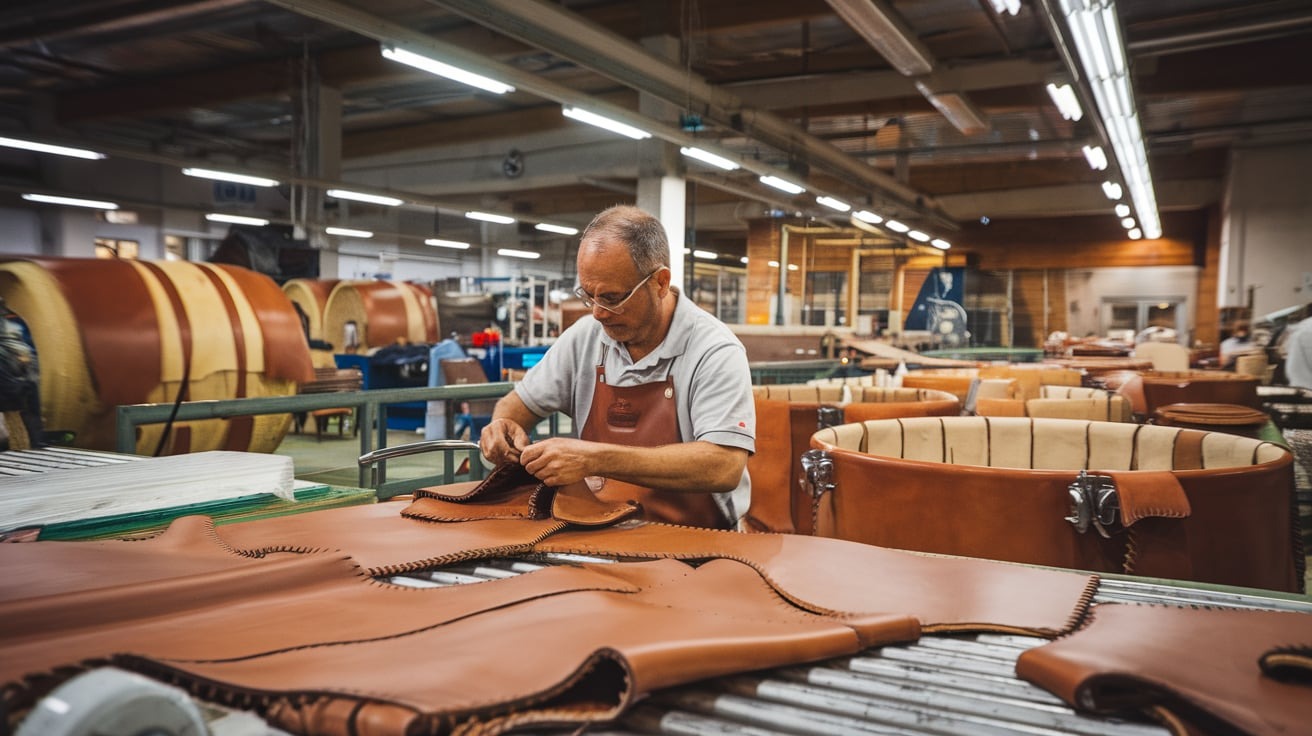Leather products manufacturing in Europe is a centuries-old tradition that has evolved to become synonymous with quality, craftsmanship, and innovation. From Italy’s world-renowned tanneries to France’s luxury fashion houses, Europe has consistently set the global standard for leather goods. The continent’s approach to leather manufacturing combines time-honored techniques with cutting-edge technology, ensuring that the products created are not only of the highest quality but also sustainable and ethically sourced. This blend of tradition and innovation is what makes European leather products highly sought after in the global market. In this article, we will delve into the processes and techniques that define leather products manufacturing in Europe, exploring how the industry maintains its reputation for excellence while adapting to modern demands.
Sourcing High-Quality Leather: The European Approach

The foundation of exceptional leather products lies in the quality of the raw materials used. European leather product manufacturers are renowned for their meticulous selection of hides and skins, which are sourced from the finest tanneries across the continent. These tanneries often work closely with local farmers and livestock suppliers to ensure that the leather is ethically sourced and of the highest standard. Ethical sourcing is a key component of the European leather industry, reflecting a commitment to sustainability and animal welfare. Many European tanneries follow stringent guidelines that promote humane treatment of animals and environmentally friendly tanning processes. This dedication to quality and ethics not only enhances the reputation of European leather products but also meets the growing consumer demand for sustainable and responsibly made goods.
Moreover, European leather manufacturers often prefer vegetable-tanned leather, a traditional method that uses natural tannins derived from plant materials. This process, though time-consuming, results in leather that is durable, develops a rich patina over time, and is free from harmful chemicals. The emphasis on using natural tanning methods and sourcing from reputable suppliers ensures that the leather products manufactured in Europe are of unparalleled quality, making them a benchmark in the global market.
Traditional Leather Working Techniques in Europe
Europe’s leather industry is steeped in tradition, with many manufacturers still employing age-old techniques passed down through generations. Handcrafting is at the heart of European leather manufacturing, where skilled artisans meticulously cut, stitch, and finish each piece by hand. This level of craftsmanship ensures that each product is unique, with a distinct character that reflects the artisan’s skill and attention to detail. Techniques such as hand-stitching, edge finishing, and burnishing are integral to the production process, giving European leather products their signature look and feel.
Preserving these traditional methods is crucial to maintaining the heritage and cultural significance of European leather. However, manufacturers are also adapting these techniques to meet modern demands. This includes incorporating new materials and designs while maintaining the integrity of traditional craftsmanship. For instance, while the handcrafting process remains largely unchanged, artisans are increasingly using tools and technologies that enhance precision and efficiency without compromising on quality. This fusion of tradition and innovation allows European leather manufacturers to cater to contemporary markets while preserving their rich heritage.
Modern Innovations in European Leather Manufacturing
While tradition plays a significant role in European leather manufacturing, modern innovations are equally important in maintaining the industry’s competitive edge. The integration of technology into the production process has revolutionized how leather products are manufactured in Europe. Automation, for instance, is used to streamline repetitive tasks, allowing artisans to focus on more intricate aspects of production. Digital tools such as computer-aided design (CAD) software enable precise pattern making and customization, ensuring that each product meets the exact specifications required by the market.
Moreover, innovations in material science have led to the development of new types of leather, such as lightweight and stretchable varieties, which expand the possibilities for product design. European manufacturers are also exploring the use of smart textiles and coatings that enhance the functionality of leather products, such as water resistance or increased durability. These technological advancements not only improve the efficiency and quality of leather manufacturing but also allow European manufacturers to remain at the forefront of the global leather industry.
Sustainability in Leather Product Manufacturing
Sustainability is a growing concern in the leather industry, and European manufacturers are leading the way in adopting eco-friendly practices. From sourcing raw materials to the tanning process, every stage of leather manufacturing is being re-evaluated to minimize environmental impact. One of the key areas of focus is the reduction of water and chemical usage during tanning. Many European tanneries are adopting water-saving technologies and using natural, biodegradable tannins instead of harmful chemicals. This not only reduces the environmental footprint of leather production but also ensures that the products are safe for consumers and the environment.
Another significant trend in European leather manufacturing is the use of upcycled and recycled materials. Manufacturers are increasingly finding ways to repurpose leather scraps and waste, turning them into new products or using them as raw materials in other industries. This circular approach to production not only reduces waste but also supports the sustainability goals of the industry. European manufacturers are also committed to transparency and traceability, ensuring that every step of the production process can be verified for its environmental and ethical impact.
The Role of European Leather in Global Markets
European leather products are renowned worldwide for their quality, craftsmanship, and style. The continent’s reputation for producing high-end leather goods has made it a key player in the global market, with exports reaching every corner of the world. European leather is often associated with luxury, and many of the world’s leading fashion houses source their leather from Europe. This global influence is not only due to the quality of the products but also the innovation and sustainability practices that European manufacturers uphold.
European leather products set global standards in terms of both quality and sustainability. The rigorous standards applied in Europe, from ethical sourcing to manufacturing processes, ensure that European leather goods are not only luxurious but also responsibly made. This commitment to excellence has made European leather highly sought after by consumers and brands alike, reinforcing Europe’s position as a leader in the global leather industry.
Conclusion
The leather products manufacturing industry in Europe is a unique blend of tradition, innovation, and sustainability. From sourcing the finest raw materials to employing skilled artisans and integrating modern technology, European manufacturers have mastered the art of creating leather goods that are unparalleled in quality and craftsmanship. The emphasis on ethical sourcing, sustainability, and innovation ensures that European leather products continue to set global standards, meeting the demands of contemporary markets while preserving the rich heritage of the industry. As the industry continues to evolve, Europe’s leather manufacturers are well-positioned to lead the way in shaping the future of leather products on a global scale. Discover the excellence of leather products with Apollo Fashion International Limited, a leading manufacturer and exporter known for top-quality leather goods crafted with precision and care.
